Moira Butterfield's Blog, page 78
June 28, 2013
Red Sails and a Junk Sandwich by Linda Strachan
I love it that ideas are everywhere.
Sometimes pinning them down and deciding what this great idea you've just had will turn into, can be the real stumbling block. When you are looking for picture book ideas, listening to small children is a delight because their view of life is so fresh and often amusingly inaccurate.
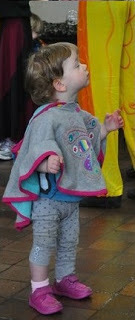 They spend a lot of their time watching the world around them, trying to make sense of it. They have few boundaries because in their world almost anything seems possible.
They spend a lot of their time watching the world around them, trying to make sense of it. They have few boundaries because in their world almost anything seems possible.
They don't really care that it is not realistic to travel to the moon for tea, or that there might be a problem getting a tiger to make friends with a mouse.
Also, the language we use can be confusing. Imagine a small child hearing that someone 'pushed their glasses up their nose', or was 'as fit as a fiddle', or any of the many other slightly bizarre expressions we use without thinking of the exact meaning. It is no wonder that when children try to make sense of the world it is often with quite comical results.
Playing with language and taking a fresh view of how we use everyday words can make a picture book familiar and yet new at the same time. I find that the juxtaposition of words can spark off ideas in all sorts of ways.
 Jack and the Flumflum Tree by Julia Donaldson has both made up and familiar words. It's a lot of fun.
Jack and the Flumflum Tree by Julia Donaldson has both made up and familiar words. It's a lot of fun.
As Jack heads off to find the Flumflum tree on the Isle of Blowyernose he takes his Granny's patchwork sack. Inside is a weird assortment of things that prove to be useful to him and his friends. When they encounter a sneaky monkey, some sharks and even when the boat starts to leak, there is something in Granny's patchwork sack that he can use to get them out of trouble.
The story rolls along with a great rhythm that makes reading it fun for the adults as well as the child.
So if you are looking for ideas for a picture book story try putting odd things together, mix up the words in song titles, listen to little children, and before you know it you will be in the world of make believe where anything and everything just might be possible!
What are your favourite, but easily misconstrued, sayings?
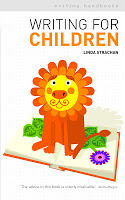
Linda Strachan is the award winning author of over 60 books for all ages, from picture books to teen novels, and a writing handbook Writing For Children.
Interested in writing for children? 12-17th august 2013 Arvon Foundation residential course with Linda Strachan and Teresa Flavin with midweek guest Bali Rai arvonfoundation.org Almost sold out- so don't delay!
This summer Linda will be speaking about her teen novels in August appearing at The Fringe by the Sea festival and The Edinburgh International Book Festival
and in September with Sophie McKenzie at Bloody Scotland Crime festival
Website www.lindastrachan.com
Blog BOOKWORDS
Sometimes pinning them down and deciding what this great idea you've just had will turn into, can be the real stumbling block. When you are looking for picture book ideas, listening to small children is a delight because their view of life is so fresh and often amusingly inaccurate.
 They spend a lot of their time watching the world around them, trying to make sense of it. They have few boundaries because in their world almost anything seems possible.
They spend a lot of their time watching the world around them, trying to make sense of it. They have few boundaries because in their world almost anything seems possible.They don't really care that it is not realistic to travel to the moon for tea, or that there might be a problem getting a tiger to make friends with a mouse.
Also, the language we use can be confusing. Imagine a small child hearing that someone 'pushed their glasses up their nose', or was 'as fit as a fiddle', or any of the many other slightly bizarre expressions we use without thinking of the exact meaning. It is no wonder that when children try to make sense of the world it is often with quite comical results.
Playing with language and taking a fresh view of how we use everyday words can make a picture book familiar and yet new at the same time. I find that the juxtaposition of words can spark off ideas in all sorts of ways.
 Jack and the Flumflum Tree by Julia Donaldson has both made up and familiar words. It's a lot of fun.
Jack and the Flumflum Tree by Julia Donaldson has both made up and familiar words. It's a lot of fun.As Jack heads off to find the Flumflum tree on the Isle of Blowyernose he takes his Granny's patchwork sack. Inside is a weird assortment of things that prove to be useful to him and his friends. When they encounter a sneaky monkey, some sharks and even when the boat starts to leak, there is something in Granny's patchwork sack that he can use to get them out of trouble.
The story rolls along with a great rhythm that makes reading it fun for the adults as well as the child.
So if you are looking for ideas for a picture book story try putting odd things together, mix up the words in song titles, listen to little children, and before you know it you will be in the world of make believe where anything and everything just might be possible!
What are your favourite, but easily misconstrued, sayings?

Linda Strachan is the award winning author of over 60 books for all ages, from picture books to teen novels, and a writing handbook Writing For Children.
Interested in writing for children? 12-17th august 2013 Arvon Foundation residential course with Linda Strachan and Teresa Flavin with midweek guest Bali Rai arvonfoundation.org Almost sold out- so don't delay!
This summer Linda will be speaking about her teen novels in August appearing at The Fringe by the Sea festival and The Edinburgh International Book Festival
and in September with Sophie McKenzie at Bloody Scotland Crime festival
Website www.lindastrachan.com
Blog BOOKWORDS
Published on June 28, 2013 23:00
Red Sails and a Junk Sandwich
I love it that ideas are everywhere.
Sometimes pinning them down and deciding what this great idea you've just had will turn into, can be the real stumbling block. When you are looking for picture book ideas, listening to small children is a delight because their view of life is so fresh and often amusingly inaccurate.
 They spend a lot of their time watching the world around them, trying to make sense of it. They have few boundaries because in their world almost anything seems possible.
They spend a lot of their time watching the world around them, trying to make sense of it. They have few boundaries because in their world almost anything seems possible.
They don't really care that it is not realistic to travel to the moon for tea, or that there might be a problem getting a tiger to make friends with a mouse.
Also, the language we use can be confusing. Imagine a small child hearing that someone 'pushed their glasses up their nose', or was 'as fit as a fiddle', or any of the many other slightly bizarre expressions we use without thinking of the exact meaning. It is no wonder that when children try to make sense of the world it is often with quite comical results.
Playing with language and taking a fresh view of how we use everyday words can make a picture book familiar and yet new at the same time. I find that the juxtaposition of words can spark off ideas in all sorts of ways.
 Jack and the Flumflum Tree by Julia Donaldson has both made up and familiar words. It's a lot of fun.
Jack and the Flumflum Tree by Julia Donaldson has both made up and familiar words. It's a lot of fun.
As Jack heads off to find the Flumflum tree on the Isle of Blowyernose he takes his Granny's patchwork sack. Inside is a weird assortment of things that prove to be useful to him and his friends. When they encounter a sneaky monkey, some sharks and even when the boat starts to leak, there is something in Granny's patchwork sack that he can use to get them out of trouble.
The story rolls along with a great rhythm that makes reading it fun for the adults as well as the child.
So if you are looking for ideas for a picture book story try putting odd things together, mix up the words in song titles, listen to little children, and before you know it you will be in the world of make believe where anything and everything just might be possible!
What are your favourite, but easily misconstrued, sayings?

Linda Strachan is the award winning author of over 60 books for all ages, from picture books to teen novels, and a writing handbook Writing For Children.
Interested in writing for children? 12-17th august 2013 Arvon Foundation residential course with Linda Strachan and Teresa Flavin with midweek guest Bali Rai arvonfoundation.org Almost sold out- so don't delay!
This summer Linda will be speaking about her teen novels in August appearing at The Fringe by the Sea festival and The Edinburgh International Book Festival
and in September with Sophie McKenzie at Bloody Scotland Crime festival
Website www.lindastrachan.com
Blog BOOKWORDS
Sometimes pinning them down and deciding what this great idea you've just had will turn into, can be the real stumbling block. When you are looking for picture book ideas, listening to small children is a delight because their view of life is so fresh and often amusingly inaccurate.
 They spend a lot of their time watching the world around them, trying to make sense of it. They have few boundaries because in their world almost anything seems possible.
They spend a lot of their time watching the world around them, trying to make sense of it. They have few boundaries because in their world almost anything seems possible.They don't really care that it is not realistic to travel to the moon for tea, or that there might be a problem getting a tiger to make friends with a mouse.
Also, the language we use can be confusing. Imagine a small child hearing that someone 'pushed their glasses up their nose', or was 'as fit as a fiddle', or any of the many other slightly bizarre expressions we use without thinking of the exact meaning. It is no wonder that when children try to make sense of the world it is often with quite comical results.
Playing with language and taking a fresh view of how we use everyday words can make a picture book familiar and yet new at the same time. I find that the juxtaposition of words can spark off ideas in all sorts of ways.
 Jack and the Flumflum Tree by Julia Donaldson has both made up and familiar words. It's a lot of fun.
Jack and the Flumflum Tree by Julia Donaldson has both made up and familiar words. It's a lot of fun.As Jack heads off to find the Flumflum tree on the Isle of Blowyernose he takes his Granny's patchwork sack. Inside is a weird assortment of things that prove to be useful to him and his friends. When they encounter a sneaky monkey, some sharks and even when the boat starts to leak, there is something in Granny's patchwork sack that he can use to get them out of trouble.
The story rolls along with a great rhythm that makes reading it fun for the adults as well as the child.
So if you are looking for ideas for a picture book story try putting odd things together, mix up the words in song titles, listen to little children, and before you know it you will be in the world of make believe where anything and everything just might be possible!
What are your favourite, but easily misconstrued, sayings?

Linda Strachan is the award winning author of over 60 books for all ages, from picture books to teen novels, and a writing handbook Writing For Children.
Interested in writing for children? 12-17th august 2013 Arvon Foundation residential course with Linda Strachan and Teresa Flavin with midweek guest Bali Rai arvonfoundation.org Almost sold out- so don't delay!
This summer Linda will be speaking about her teen novels in August appearing at The Fringe by the Sea festival and The Edinburgh International Book Festival
and in September with Sophie McKenzie at Bloody Scotland Crime festival
Website www.lindastrachan.com
Blog BOOKWORDS
Published on June 28, 2013 23:00
June 23, 2013
Getting in the mood by Abie Longstaff
I’m getting ready to write a new book.
For me this process starts with collecting ideas. My ideas come from everywhere – the radio, the newspaper, people’s stories, nature, the television – so when I’m at this stage of a project I tend to immerse myself in themes that might crop up in my book. Some of the process is about finding plots and characters, but some of it is also about retreating into a cave of writing where I (try) to shut out the world.
My new book is about a tropical swamp so I need:
1. Ideas for words
These might come from the internet;
 (Source: www.etymonline.com)
(Source: www.etymonline.com)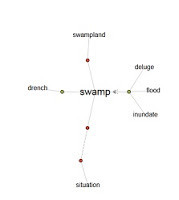 (Source: www.visualthesaurus.com)
(Source: www.visualthesaurus.com)from other books, like the wonderful Journey to the River Sea by Eva Ibbotson (any excuse to read this...);
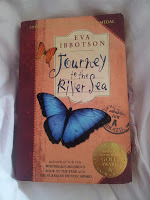
or from brain storming on my own;
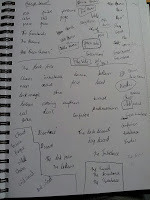
2. Ideas for images
I find Pinterest a really good source for images. I often make boards for my books as I find it really helps to collect all the pictures in one place. For me the images kick start themes, drawings and plots, or even just get me in the mood to write.
My boards:
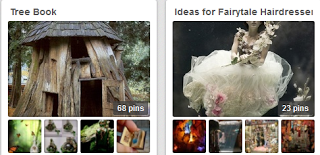
For my swamp book I have:
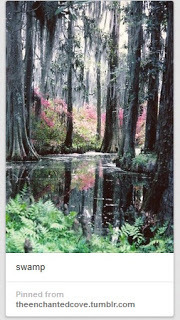
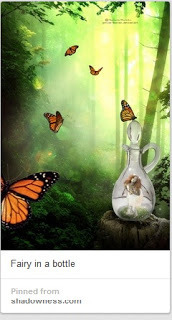
both of which are starting to spark off ideas.
I visit places that might inspire me and take photos (these are from Butterfly World):
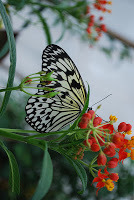
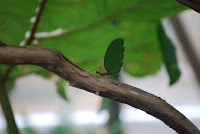
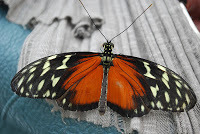
I also draw my own images to help jog things along.


3. Ideas for noise
I find sound a very evocative sense so I will search for noises that echo the mood of the book. For my swamp I’ve chosen a rainforest birdsong background.
http://www.youtube.com/watch?v=vli6cm...
I might have this on while I gather images and draw and sometimes throughout the entire writing process. Bits of birdsong may find their way into my descriptions and the noise helps to imagine the hot, humid feel of the jungle.
4. Ideas for scent
I got the idea of using scent from an author friend, Nicola Morgan. Her blog full of writing tips is highly recommended:
http://helpineedapublisher.blogspot.c...
Nicola told me she sometimes lights a candle to get her in the mood to write. I’ve started doing this too, choosing a scent depending on the book. I’m trying a tropical reed diffuser to get me in the zone for my swamp book.
I’d love to know how you get in the mood.
(If you want to see more of my boards, You can find me on Pinterest under AbieLongstaff)
Published on June 23, 2013 23:51
June 19, 2013
Just Say Yes! Turning off that critical Voice by Teresa Heapy (Guest Blog)
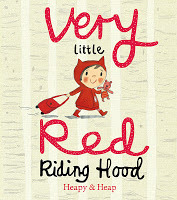 I'm doing a comedy improvisation course at the moment. Yes, me – picture book writer and editor– doing comedy impro like Whose Line Is It Anyway! I still find that quite amazing to write down. I did it (partly) to take myself out of my writer-ly comfort zone where I forever fiddle with individual words for picture books… and instead to explore spontaneous storytelling.
I'm doing a comedy improvisation course at the moment. Yes, me – picture book writer and editor– doing comedy impro like Whose Line Is It Anyway! I still find that quite amazing to write down. I did it (partly) to take myself out of my writer-ly comfort zone where I forever fiddle with individual words for picture books… and instead to explore spontaneous storytelling.For in this case, impro, with a brilliant theatre company called Kepow, is less about “Tell us a joke about a toaster! Now!” and more about character and plot – creating stories out of thin air.
Every Monday evening, our supportive group – all of whom start out with nothing in our heads – end up in stories where we’re two inches high, exploring underground laboratories, or heading off to the moon. And we’re finding that improvising satisfying stories spontaneously is truly thrilling (especially when we do it in front of a live audience). Yes, it can be a terrifying place in your blank head, in that moment before you speak – but when a scene flies, it’s fantastic.
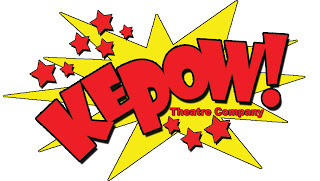
So how does this feed into writing picture books, on my own, on a Monday morning?
I think the key thing is that it reminds me to tell That Voice on my shoulder to go away. You know, That Voice. The one that says "Well that's no good, ooh, not original enough, that's far too obvious, blimey, what wereyou thinking?!" (Or is that just me?!) In impro, our great course tutor, Kevin, tells us to switch off that inner critical voice and, crucially, to instead say “Yes! And?...” to every suggestion.
Sometimes, both in impro and in writing, I’m finding that the most obvious things are the right things. Rather than listening to a manic inner voice screaming “Come on! More Original! More Creative!”it’s about finding the truth of what would happen. When I’m writing picture books about characters who are two years old, I have to keep reminding myself to go for the reality of what they would do. Would they really scream at this particular point? Would they actually go ominously quiet? Similarly, in impro (particularly in the early stages of a scene), audiences don’t really want that envelope in your hand to contain a magic spell for invisibility. They want it to be a letter, or a job offer, or a will.
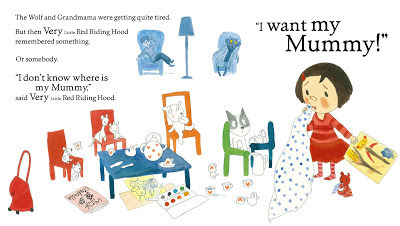 Very Little Red Riding Hood (two years old) has a wobbly moment.
Very Little Red Riding Hood (two years old) has a wobbly moment.On the other hand, sometimes the most obvious thing isn’t right, and you need to be highly creative and imaginative. But having a positive Voice which says ”Yes! And?...” to every thought doesn’t mean you’ll end up with a boring story. Instead it prompts you to think– what would move the plot forward? What if they opened that door, looked into that box, went into that wood?... In impro, you continually have to move the story on instead of ‘blocking’ it by saying “No” (internally or externally!). You have to go down that dark corridor (where you can hear something licking its lips) – whereas in real life you’d very sensibly run away!
Turning off That Voice also means that you get to delve right inside your head and see what truly bonkers things pop out. In one picture book story for me, this was an enormous multi-coloured monster who kept causing chaos whilst a normal family was trying to have breakfast. And sometimes in impro, you can find yourself being interrogated by an invisible giant who is trying to kill you…
Whichever way it takes you, it’s a great release to tell That Voice to sit down, shut up and let you get on with what your brain offers up.
Now sometimes, of course, as a writer, the critical Voice is helpful. When you’ve got a story written and you’re happy with most of it, you need that Voice to needle out what’s not working and be quite hard and honest. But first you have to get the first draft written down. And for that, I personally need my critical Voice to take a long spa break somewhere very far away. (This is a particular issue for me, as I’m also a freelance commissioning editor.)
 My critical Voice relaxing by the pool.
My critical Voice relaxing by the pool.So now I’ve got a new Voice on my shoulder when I’m writing those first drafts. It prompts, it encourages. It dares me to create new characters, to tease out the reality of existing ones, and to take them to weird and wonderful places.
 What the?
What the?And I’m just about to perform in another impro show. (In the last one, I became a woman obsessed with tropical fruit, who ran over her two-timing ex-lover with a double-decker bus, specially hired for the purpose. I spent a good few days wondering where that came from.)
I’m already feeling terrified and excited in equal measure. But I’m looking forward to the new stories we’ll create. And hopefully the new Voice will shout “Bravo!”
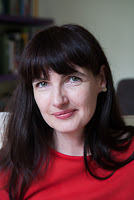 Our Guest Blogger, Teresa Heapy, is an author and freelance commissioning editor. She has written books for educational publishers including Oxford University Press, Pearson and HarperCollins.
Our Guest Blogger, Teresa Heapy, is an author and freelance commissioning editor. She has written books for educational publishers including Oxford University Press, Pearson and HarperCollins.
Her first picture book, Very Little Red Riding Hood, with illustrations by Sue Heap, will be published by David Fickling Books in October 2013.
Published on June 19, 2013 00:00
June 13, 2013
Converting The Picture Book Attic, by Pippa Goodhart
In recent years there’s been a trend for converting house attics into proper rooms. What had held dust and rats, water tanks and junk, have become studies, en-suite bedrooms, artist’s studios, and more. Well, I think it is time to do the same thing for picture books. There is a similarly lovely big expanse of room that is often under-used in picture books, and that’s the endpapers. We’re missing an opportunity if we don’t use them.
Endpapers are exactly that; the paper at the end of each book, joining cover to content. That’s their job. Most endpapers are left as bare white paper, and useful for old-fashioned library Return Due Date stickers to be stuck to, but that’s about all. I’ve noticed how often it is the blank endpapers of library picture books which get scribbled on by small children. Are they trying to tell us something? “Use this space!” And some picture books do.
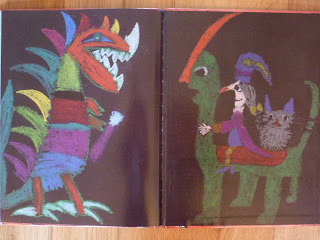
Korky Paul cleverly hands-over the endpaper artwork to children. These pictures of Winnie the Witch and cat Wilbur with dinosaurs are by Park Jung-Eum and Park Ji-Eun, aged seven. They are wonderfully bold, dramatic and fun pictures which must give children a pleasing can-do feeling in knowing that people of their own age can have good work published.
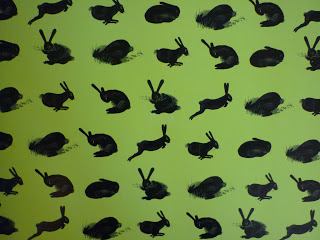
Jo Empson uses the endpapers in Rabbityness to give a kind of rabbit wallpaper of different rabbit poses; very attractive, and an appetiser for the story to come.
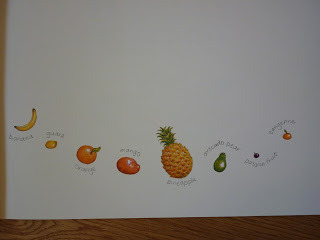
Eileen Browne uses the endpapers for Handa’s Surprise to show and name fruits at one end of the book, and wild animals at the other end, adding interesting lessons to what is already one of the best picture book stories ever.
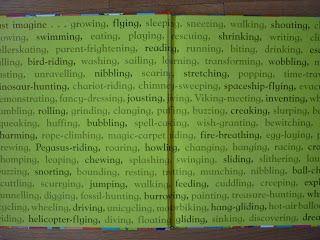
My You Choose and Just Imagine books have illustrations crammed with images but have little text. I was a child who found reading hard, and was always relieved to find a book that didn’t demand much reading. But there are children who relish new words to read. So we’ve used the endpapers to list hundreds of words, offering a kind of treasure hunt game for those who like reading the words (they all name things to be found in the pictures), but placed in the book so that they are not a necessary part of the book experience if reading words isn’t something you enjoy.
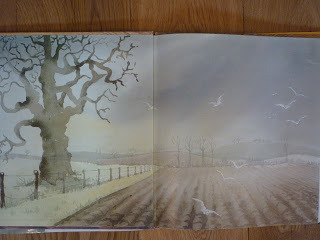

Helen Oxenbury’s beautiful pictures on the endpapers of Farmer Duck are glorious. Nothing ‘childish’ about them, and yet I’m sure that children sit and absorb and lot from them, both for their beauty and for what they reflect from the story. At the start we see the farm landscape in winter; bleak and harsh. By the end of the book that same scene has blossomed into warm colourful summer.
I’ve just asked my editor if a new book that is (hopefully!) on its way to publication might have a board game on its endpapers.
There are so many way in which endpapers might add to picture books. They might add information relevant to a story, for example with a map of where the story takes us, or non-fiction information relevant to the fictional tale. They might add a game or an activity to complement a story. How about a recipe or a quiz, instructions on how to make a paper aeroplane, or black and white pictures to be photocopied or traced for colouring in? Or simply add decoration to make a book more beautiful.
When books are fighting for sales against so many other attractions, an extra ‘room’ in a book might just make it a winner. What other examples of extending stories into the endpapers have you found, or can you think of?
Published on June 13, 2013 16:30
June 9, 2013
Home-Based Working by Janet Bingham (Guest Blog)
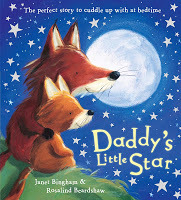 I’m something of a split personality: Janet Bingham, author, of picture books; and Janet Bingham, editor, of a more prosaic and grown-up abstracting service.
I’m something of a split personality: Janet Bingham, author, of picture books; and Janet Bingham, editor, of a more prosaic and grown-up abstracting service. Editor-me has been working for 28 years on basically the same product, always in a spacious office surrounded by friendly workmates. Author-me is a more novice, solitary creature, and messy. She wanders around the house muttering to herself, trailing books and scribbled scraps of paper, occasionally settling in the study and clearing the keyboard of piles of magazine cuttings in order to tap in a few words.
The territories of author-me and editor-me were safely separated, until now, by a four-mile road trip. But suddenly (admittedly with lots of warning) my day job has become home-based. I am officially a home-worker.

The household study, previously all mine apart from occasional incursions by other family members, is now home to two jostling computers wearing different hats. My own computer is no longer king of its domain, but dominated by the infiltrator on which the daily bread is earned. My swivel chair swivels between them with a confused look on its face.
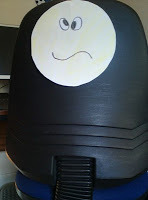
Working from home has its pros (the quiet, the vicinity of the fridge), and its cons (ditto). But the loss of the car trip is definitely the biggest pro-con.
The slow, petrol-guzzling drive to work in the rush-hour, and back again, was my essential thinking time. Aside from the middle of the night, it was my main chance to work out potential story lines. It was a good time for rolling sentences around in my head. I could even recite the words out loud while risking nothing more than a few odd looks from passers-by.
The passers-by themselves could be inspiring and so could the weather and the passing seasons: the wide East Anglian skies gave me the basic idea for Daddy's Little Star, and it was watching small children walking to school under leaf-shedding trees that gave me the character who became Little Fox in the story.
So the daily drive gave me food for creative thought. And the outward journey had the added advantage of telling me to get ready to sit down to the serious stuff of the working day ahead. The drive home did the opposite – it was time to switch off and look forward to an evening with my husband, and any grown up children who happened to be home.
 So it’s the morning drive that I miss when I settle down to work in my slippers, with shiny new gizmos connecting me to the outside world, and a weekly team-meeting in the pub to look forward to. In other respects working from the comfort of home is suiting me quite nicely. But I’m struggling to do without the car-shaped pivot in my work-life balance. Even the car looks melancholy and forsaken.
So it’s the morning drive that I miss when I settle down to work in my slippers, with shiny new gizmos connecting me to the outside world, and a weekly team-meeting in the pub to look forward to. In other respects working from the comfort of home is suiting me quite nicely. But I’m struggling to do without the car-shaped pivot in my work-life balance. Even the car looks melancholy and forsaken.I’m almost tempted to drive anywhere and back again in the rush hour every morning after breakfast. How else can I replace that special quality creative-thinking, countdown-to-work time?
Any suggestions gratefully received!
 Janet Bingham
Janet BinghamPhotography by Kim Ayres (kimayres.co.uk) as part of a series
of images for Wigtown Book Festival 2012Our Guest Blogger, Janet Bingham, is the author of six picture books, including Daddy’s Little Star, published by Scholastic and illustrated by Rosalind Beardshaw.
Other recent moments of identity-confusion include a brief appearance as Billie Jean Fleetwood-Mack, from Roddy Doyle’s The Giggler Treatment, seen here earnestly mountaineering on the stairs!
Published on June 09, 2013 00:00
June 4, 2013
My Illustration Style – A Brief History – only not so brief, sorry. . . by Jonathan Allen
As an illustrator amongst a gaggle of writers I guess I'd better post something about illustration. So here goes.
I'll write about influences, subject matter and how I came to be doing what I do another time, OK? If you don't know my work, (gasp! is such a condition even possible!?) I draw appealing, funny animals in a simple 'cartoony' (for use of a better word) style. Today I'm going to talk about my drawing process and how it came about.
This is a rather ropey but fun little video I put together of my current process in action. Dig the music ;-) Sorry it ends rather abruptly, this vid making lark is a bit of a learning curve.
Some history - I started off drawing simple outlines of said funny animals and background trees, windows etc, truncated by the edge of the frame. Colouring the resulting shapes with flat poster paints in bright colours straight out of the pots. It looked quite nice, in a bold, abstract, graphic sort of way, and I got a commission to do a couple of cards for Gallery Five in this style while I was still at college, which was encouraging.
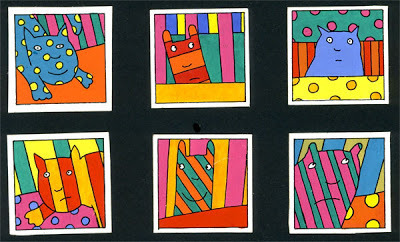 This kind of thing, though these were done a few years later
This kind of thing, though these were done a few years laterBut this flatness became very limiting, so by a process of good old trial and error, the flat colour evolved into a more subtle watercolour/gouache wash in naturalistic colours over/under the same simple outlines.
This was pretty good, but not quite right, so by dint of further trial, error and evaluation, the addition of cross hatching with a finer pen - to help define form and texture, was settled on. This worked well and after a touch more refining, became my 'style'. Phew. . .
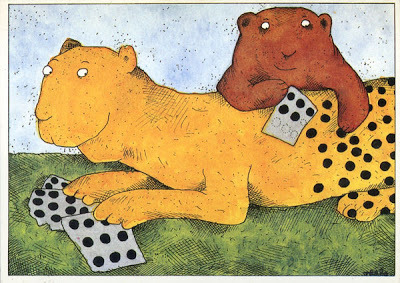 This was one of my first illustration jobs, for Gallery 5
This was one of my first illustration jobs, for Gallery 5My procedure was this, I started off with a pencil rough, which I either copied or traced onto artboard. I added wash to that, then, when it was dry, I drew a pen outline using the ubiquitous Rotring pen. I then added the cross hatching using a thin version of said rotring pen. This was Ok but the pen would clog frequently, as anyone who used rotrings and their ilk would affirm. Still, it worked and was successful so this was my preferred method for years.
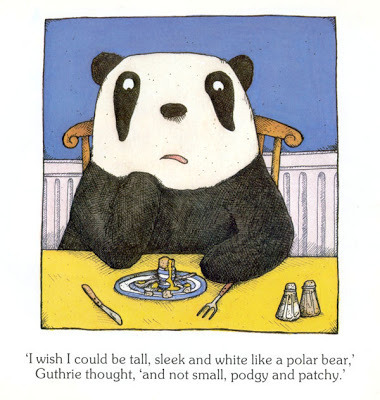 From my first picture book, 'Guthrie Comes Clean', published by J.M Dent, way back. .
From my first picture book, 'Guthrie Comes Clean', published by J.M Dent, way back. . Until the mid nineties. . . drum roll. . . swiss roll. . . iced bun. . .It was then that I became attracted to the idea of using a computer to make my artwork on, as this had just become possible at a more or less consumer level. I didn't want to use it to make computery looking fancy stuff, (that was SO naff, even then) but to draw and paint directly into the computer in my usual style, using a graphics tablet and a bit of software called Painter, which imitated 'natural media' such as water colour, digitally. It sounded interesting, and, well, I just liked the idea for some reason. So I took the plunge and bought a Mac (a 7100 I think it was called. I still have it in the attic. No idea why. . . ) a Wacom tablet and some software, and thus equipped, set to work learning how to use it all. It was fun actually. I like working things out. Usually. My work is essentially coloured-in drawings as opposed to painterly creations utilising the characteristics of the medium, so the computer could get pretty close to my fairly unexpressive line and wash style.
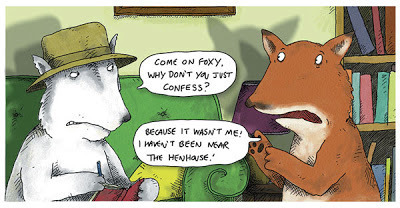 From 'Fowl Play' one of the first books I did on computer for Orion
From 'Fowl Play' one of the first books I did on computer for OrionThe advantages were that unlike 'real' artwork, everything was editable. I could change the size of things, tweak the colours and thickness of line, etc., which was great, especially when working out page layouts, etc. Also, artwork didn't need to be scanned, which was nice for me because it always annoyed me that a scanner would show pencil lines that as far as I was concerned had been erased as they were invisible to the naked eye. Publishers always defended this by saying that the scanners were so 'good' that they picked up everything. A strange definition of the word 'good' I always thought. So good they can pick up things you can't even see! . .. fah!The disadvantage was that nobody in the publishing industry knew what the heck they were getting or what to do with it. I wasn't exactly an expert either. The main point of contention and concern was that as the artwork only existed on screen, the colours varied according to what screen it was being viewed on. Calibration was important. Everyone had to be confident that they were seeing the same colours as each other as there was no actual bit of artwork to compare the printers proofs to. I wasn't ever so popular ;-) But we got there in the end. The publishers and printers knew that the repro industry was well on it's way to being digitally led and that they had to adapt.
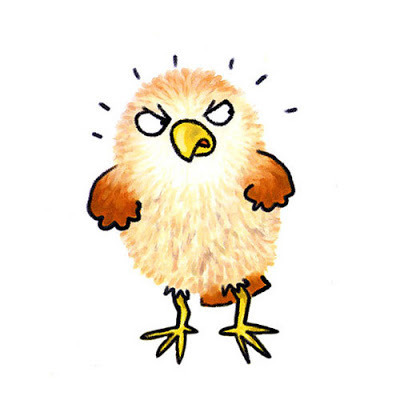 Baby Owl, conceived and created on computer
Baby Owl, conceived and created on computerI've worked on computer ever since. A lot of artists now scan their work in and modify it in Photoshop. And a lot of artists use Adobe Illustrator, which lets them produce resolution independent images, funnily enough using flat colours and simple outlines like my ancient poster paint images did. It's just normal now but I remember those pioneering days. . . One day I shall sit my grandchildren round the fire and tell them tales of the days when men were men and a megabyte was something significant. And they will fall asleep in seconds flat. . .
Published on June 04, 2013 01:38
May 30, 2013
“I’ve no idea how to do this!” Do writers get the ‘yips’?
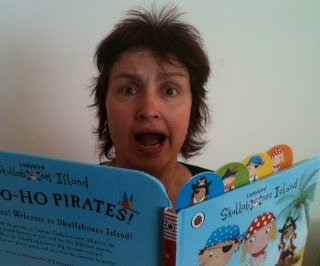
Moira Butterfield
Is it just me who sometimes gets a mild case of ‘writer’s yips’? I don’t want to inflict it on other people, but I honestly hope I’m not the only one. To explain – I've just made up that term 'writer's yips', but it seems appropriate. The ‘yips’ is the name given to a weird condition suffered by experienced and successful sportspeople who suddenly find that their body is taken over by their mind and they cannot perform the simple basic skills they would normally do well. It was coined for a golfer in the 1920s, who, having won the US Open, went on to take a record 23 shots on one hole in his next competition. He found himself completely unable to hole a putt. Similar yips have happened to famous and not-so-famous golfers, cricketers, snooker players and darts kings. Even World Champion darts supremo Eric Bristow has admitted that, for a short time, he couldn’t let go of any dart he tried to throw! It seems that the condition is most likely to affect players taking part in sports where they have plenty of time to think before an action, giving room for a psychological wobbly.
So what does this have to do with writing? As I said, at the time of writing I seem to have come down with a (hopefully mild) case of writing yips. I have a couple of picture book stories in progress. I have publishers who are interested in seeing them. I’ve written picture books before and edited them, too. So why am I getting the feeling that I have no idea how to write? Instead I’m metaphorically running around, getting nowhere, doing my best impression of Clive Dunn in Dad’s Army:
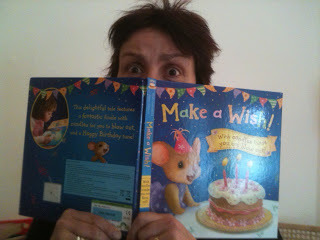
“Don’t panic! Don’t panic!”
I also write non-fiction, and it's normal for me to get a brief moment at the beginning of a project when I think: “Why did I say I could do this? I have no idea how to do this!” But the feeling never lasts, and I always plunge in, experience taking over.
It’s different with the picture books. I think it’s partly to do with my growing confusion about what a picture book should be. Should it rhyme or not rhyme? No, say publishers, because they want quick sales abroad. Yes, say the British public, stocking up on the rhyming stories of Julia Donaldson. Should the text follow a conventional story pattern? What if it doesn’t? What if it’s rubbish?
“Don’t panic, Mr Mainwaring! Don’t panic!”
Pressure soon swirls around every word. No wonder my brain has frozen, and no wonder I ‘can’t throw the dart’.
Perhaps I can get some inspiration from current sporting hero Sir Bradley Wiggins, cyclist extraordinaire and winner of last year’s Tour De France. As I wrote this blog, he was on an impossibly-steep Italian mountainside competing in the Giro D’Italia, a punishing three-week road race he’d been targeting for a win. But Sir Brad suddenly seemed to develop an aversion to riding downhill fast in rain. It’s possible he began to feel nervous because he fell off early in the race and cut open his elbows, but this is his job and he’s done it before at the highest level, so knocks and bruises comes with the territory and nerves don't. He was obviously angry with himself for developing a confidence issue. He chucked his bike angrily in a hedge, and he got a bit shouty with the press. Hmm. perhaps I should chuck my keyboard out of the window and get grumpy with someone...
Now I don’t want to make out that I’m the Bradley Wiggins of picture books here! Far from it. But perhaps I may be able to take inspiration from him (though not with the keyboard-chucking). I suspect that what he’ll do to overcome his nerves is to train harder – knuckle down to the nitty-gritty basics of his art. He’ll talk to his sports psychologist, too, I guess, to get his negative feelings under control.
So…I must get away from that list of pressures I’ve created in my own mind, get away from all the picture book theories and the ‘should I do it this way or do it that way’ paralysis.
I think I need to metaphorically get back on the bike and just pedal.
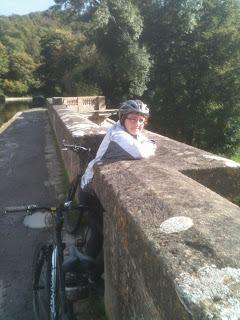 Go on! Get on it and pedal!
Go on! Get on it and pedal!
Published on May 30, 2013 00:00
May 24, 2013
Twenty Years a Writer! by Malachy Doyle
I do things for ten years, and then I get bored.
I was a wee fella for ten years...
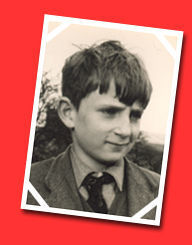
And then I decided it'd be a whole lot more fun to be a teenager, and let my hair go all shaggy, and buy a Lambretta...
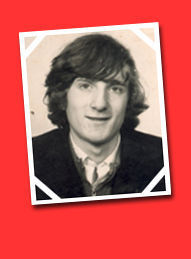
But ten years of zits and raging hormones is quite enough for any human being, so at the age of twenty, I decided to do all those grown-up things, like getting wed and working in advertising...
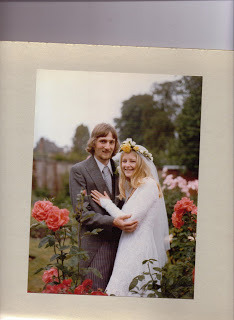
I'm not bored of being married yet, but ten years in advertising is quite enough for any sane individual, so at the age of thirty I chucked it all in for the 'good life' in Wales, raising children, runner beans and pigs. Oh, and working as a care assistant in a residential school for young people with special needs.
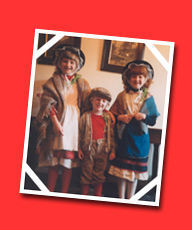
(That's our own children in the photo, by the way, all dressed up for Saint David's Day.)
But, much as I admire people who can do such work for ever, it has a habit of grinding you down.
So after ten years, in 1993 - 20 years ago today, roughly - I found myself enrolling on a creative writing evening class in Ysgol Bro Ddyfi, Machynlleth, run by a very nice young lady called Zoe.
I was forty by then, three times bored. Among other things, Zoe got us writing about our childhood memories. I did a little piece about my mother's button box. It had been my job to fetch it down from the high shelf above the stove when my Dad wanted to play poker. I didn't care how badly I lost, as long as I could keep that little pink rabbit - half a century later, I've still got it.

And there was something about sinking into those memories. Something about dwelling in the headspace of that young Malachy, aged 4 and 5 and 6 and 7... About looking at the world through his eyes. Something about writing...
This is what I want to do, I thought. This is what I HAVE to do.
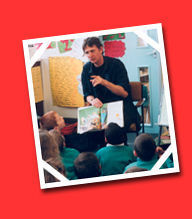
So I did. I did it for ten years, and forty books. And guess what? I didn't get bored.
So I broke the habit of a lifetime. I did it for another ten years. Another sixty books. And guess what?
Published on May 24, 2013 21:00
May 20, 2013
The Seven Ages of Picture Books by Lucy Marcovitch
My daughter is almost seven, and takes any and every opportunity to read. She will happily get through a book a day, and we make weekly library visits to replenish her supply. Current favourites are anything by Holly Webb, the pervasive Rainbow Fairies, Mr Gum, and the first ‘Little House’ books. She’s flown in wishing chairs and climbed up faraway trees and she and I are working our way through the Narnia series. Her reading is fluent and sophisticated; she’s done with picture books.
Or so I assumed. Yet when I read to my children, my daughter invariably chooses a picture book, and listens enraptured. She never says, “too babyish” or “picture books are boring”. She listens to the story and investigates the illustrations with as much fascination as her non-reading younger brother. Watching her the other evening, I thought about this enduring appeal of picture books to older, literate children, and their presence in my adult life. It’s almost as if there are seven ages of picture books.
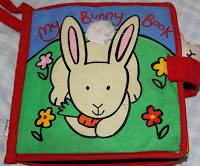 First ageMy daughter’s first ‘reading’ experience was My Bunny Book. It’s a cloth book in bright colours, containing different sound and touch effects – crinkly bunny ears, boingy bunny leaps, strokable bunny fur. It epitomises the first age of picture books – tactile, dribble- and rip-proof, designed for chewing, grabbing, scrunching and bashing. This age is all about wonder, discovery and curiosity, laying the vital foundations for a book-reading life.
First ageMy daughter’s first ‘reading’ experience was My Bunny Book. It’s a cloth book in bright colours, containing different sound and touch effects – crinkly bunny ears, boingy bunny leaps, strokable bunny fur. It epitomises the first age of picture books – tactile, dribble- and rip-proof, designed for chewing, grabbing, scrunching and bashing. This age is all about wonder, discovery and curiosity, laying the vital foundations for a book-reading life.
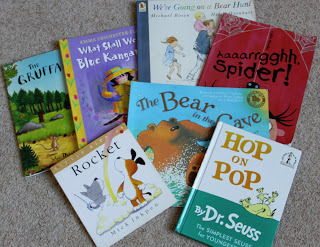 Second age
Second age
The second age is the golden age of picture books. Now it’s all about real pleasure and appreciation – sharing books, understanding and discovering the absolute joy that stories can give. It’s the age of “Again!” “Read it!” and “More!” when 12 pages of short sentences or even single words become embedded within a parents’ consciousness, and libraries come into their own. It’s when you don’t just read, but talk about stories, characters and illustrations together, and children delight in discovering that there are other children (human or animal) that are like them.
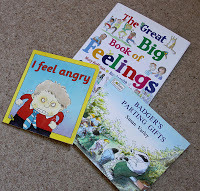 Third ageMy son is learning to read, and loves spotting words he can read when I’m reading to him. In this third age of picture book reading a new world opens up, where a child can take control of their reading, and become more independent in their enjoyment of stories. It also adds another layer of interaction between adult and child – when I read to my son now, we share the experience in a more active way, and he can start to make the telling his own by using a different voice to mine.
Third ageMy son is learning to read, and loves spotting words he can read when I’m reading to him. In this third age of picture book reading a new world opens up, where a child can take control of their reading, and become more independent in their enjoyment of stories. It also adds another layer of interaction between adult and child – when I read to my son now, we share the experience in a more active way, and he can start to make the telling his own by using a different voice to mine.
This third age is also about stories taking on deeper meanings and enabling children to deal with life challenges and concepts. Of course such issues can be approached using picture books when they’re younger, but it seems that during this third age picture books offer a safe, non-threatening way to explore concepts and feelings that children can’t articulate. Recently, I read my children The Big Bag of Worries by Virginia Ironside, and I have rarely seen my daughter sit so completely still. I could almost feel the intensity of her interest in it, and it made me realise that perhaps there were anxieties that she felt unable to share which were being addressed by the book.
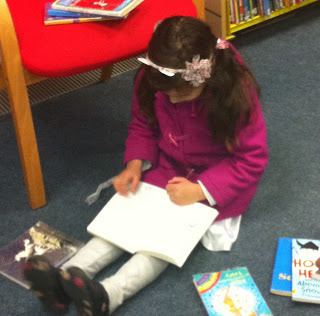 Fourth ageNow comes the pleasure of picking up a favourite picture book and actually being able to read it to yourself, rather than waiting for someone else to do it for you. The book is there to discover or re-discover for yourself, completely on your own. A child in this fourth age of picture-book reading has moved into that wonderful and everlasting realm of Reading My Book.
Fourth ageNow comes the pleasure of picking up a favourite picture book and actually being able to read it to yourself, rather than waiting for someone else to do it for you. The book is there to discover or re-discover for yourself, completely on your own. A child in this fourth age of picture-book reading has moved into that wonderful and everlasting realm of Reading My Book.
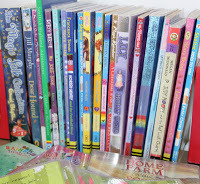 Fifth ageThis is where my daughter is now, a fluent, voracious reader, working her way through the middle-grade bookshelf. And yet she returns again and again to picture books, perhaps to re-create that security and comfort she felt as a baby or toddler being held close by her parents, when she didn’t have the responsibilities or requirements of school or friendships to manage and negotiate. She enjoys me telling her that Dear Zoo was one of her favourites, or that she loved the Blue Kangaroo books, in the same way as she loves looking at her baby photos.
Fifth ageThis is where my daughter is now, a fluent, voracious reader, working her way through the middle-grade bookshelf. And yet she returns again and again to picture books, perhaps to re-create that security and comfort she felt as a baby or toddler being held close by her parents, when she didn’t have the responsibilities or requirements of school or friendships to manage and negotiate. She enjoys me telling her that Dear Zoo was one of her favourites, or that she loved the Blue Kangaroo books, in the same way as she loves looking at her baby photos.
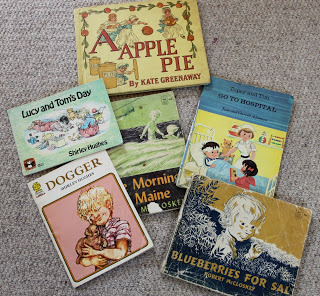 Sixth and seventh agesThese are the adult ages. The sixth is all about nostalgia – I have shelves full of books that I owned as a child, the oldest being One Morning in Maine, which was given to me in 1973 on my third birthday. Many I have read to my own children, all three of us feeling the specialness of ‘mummy’s books when she was a little girl’. I have my own childhood memories and feelings bound up in them – I often find that memories are triggered by illustrations in a favourite picture book – a children’s author’s equivalent of Proust’s madeleines, perhaps. Which leads me on to the seventh age – the reading of picture books to one’s own children, re-experiencing old ones, and discovering new ones.
Sixth and seventh agesThese are the adult ages. The sixth is all about nostalgia – I have shelves full of books that I owned as a child, the oldest being One Morning in Maine, which was given to me in 1973 on my third birthday. Many I have read to my own children, all three of us feeling the specialness of ‘mummy’s books when she was a little girl’. I have my own childhood memories and feelings bound up in them – I often find that memories are triggered by illustrations in a favourite picture book – a children’s author’s equivalent of Proust’s madeleines, perhaps. Which leads me on to the seventh age – the reading of picture books to one’s own children, re-experiencing old ones, and discovering new ones.
I have written picture books, blogged about them, and read them to my children every day of their lives so far. And yet I have underestimated their power. Picture books lay the foundations of our future and become a constant in our lives, as enduring as the seven ages of life itself.
 Our Guest Blogger, Lucy Marcovitch, is an education writer, author and blogger. She has two picture books published by Tamarind Press, and her interesting blog can be found here.
Our Guest Blogger, Lucy Marcovitch, is an education writer, author and blogger. She has two picture books published by Tamarind Press, and her interesting blog can be found here.
Or so I assumed. Yet when I read to my children, my daughter invariably chooses a picture book, and listens enraptured. She never says, “too babyish” or “picture books are boring”. She listens to the story and investigates the illustrations with as much fascination as her non-reading younger brother. Watching her the other evening, I thought about this enduring appeal of picture books to older, literate children, and their presence in my adult life. It’s almost as if there are seven ages of picture books.
 First ageMy daughter’s first ‘reading’ experience was My Bunny Book. It’s a cloth book in bright colours, containing different sound and touch effects – crinkly bunny ears, boingy bunny leaps, strokable bunny fur. It epitomises the first age of picture books – tactile, dribble- and rip-proof, designed for chewing, grabbing, scrunching and bashing. This age is all about wonder, discovery and curiosity, laying the vital foundations for a book-reading life.
First ageMy daughter’s first ‘reading’ experience was My Bunny Book. It’s a cloth book in bright colours, containing different sound and touch effects – crinkly bunny ears, boingy bunny leaps, strokable bunny fur. It epitomises the first age of picture books – tactile, dribble- and rip-proof, designed for chewing, grabbing, scrunching and bashing. This age is all about wonder, discovery and curiosity, laying the vital foundations for a book-reading life.
 Second age
Second ageThe second age is the golden age of picture books. Now it’s all about real pleasure and appreciation – sharing books, understanding and discovering the absolute joy that stories can give. It’s the age of “Again!” “Read it!” and “More!” when 12 pages of short sentences or even single words become embedded within a parents’ consciousness, and libraries come into their own. It’s when you don’t just read, but talk about stories, characters and illustrations together, and children delight in discovering that there are other children (human or animal) that are like them.
 Third ageMy son is learning to read, and loves spotting words he can read when I’m reading to him. In this third age of picture book reading a new world opens up, where a child can take control of their reading, and become more independent in their enjoyment of stories. It also adds another layer of interaction between adult and child – when I read to my son now, we share the experience in a more active way, and he can start to make the telling his own by using a different voice to mine.
Third ageMy son is learning to read, and loves spotting words he can read when I’m reading to him. In this third age of picture book reading a new world opens up, where a child can take control of their reading, and become more independent in their enjoyment of stories. It also adds another layer of interaction between adult and child – when I read to my son now, we share the experience in a more active way, and he can start to make the telling his own by using a different voice to mine. This third age is also about stories taking on deeper meanings and enabling children to deal with life challenges and concepts. Of course such issues can be approached using picture books when they’re younger, but it seems that during this third age picture books offer a safe, non-threatening way to explore concepts and feelings that children can’t articulate. Recently, I read my children The Big Bag of Worries by Virginia Ironside, and I have rarely seen my daughter sit so completely still. I could almost feel the intensity of her interest in it, and it made me realise that perhaps there were anxieties that she felt unable to share which were being addressed by the book.
 Fourth ageNow comes the pleasure of picking up a favourite picture book and actually being able to read it to yourself, rather than waiting for someone else to do it for you. The book is there to discover or re-discover for yourself, completely on your own. A child in this fourth age of picture-book reading has moved into that wonderful and everlasting realm of Reading My Book.
Fourth ageNow comes the pleasure of picking up a favourite picture book and actually being able to read it to yourself, rather than waiting for someone else to do it for you. The book is there to discover or re-discover for yourself, completely on your own. A child in this fourth age of picture-book reading has moved into that wonderful and everlasting realm of Reading My Book. Fifth ageThis is where my daughter is now, a fluent, voracious reader, working her way through the middle-grade bookshelf. And yet she returns again and again to picture books, perhaps to re-create that security and comfort she felt as a baby or toddler being held close by her parents, when she didn’t have the responsibilities or requirements of school or friendships to manage and negotiate. She enjoys me telling her that Dear Zoo was one of her favourites, or that she loved the Blue Kangaroo books, in the same way as she loves looking at her baby photos.
Fifth ageThis is where my daughter is now, a fluent, voracious reader, working her way through the middle-grade bookshelf. And yet she returns again and again to picture books, perhaps to re-create that security and comfort she felt as a baby or toddler being held close by her parents, when she didn’t have the responsibilities or requirements of school or friendships to manage and negotiate. She enjoys me telling her that Dear Zoo was one of her favourites, or that she loved the Blue Kangaroo books, in the same way as she loves looking at her baby photos. Sixth and seventh agesThese are the adult ages. The sixth is all about nostalgia – I have shelves full of books that I owned as a child, the oldest being One Morning in Maine, which was given to me in 1973 on my third birthday. Many I have read to my own children, all three of us feeling the specialness of ‘mummy’s books when she was a little girl’. I have my own childhood memories and feelings bound up in them – I often find that memories are triggered by illustrations in a favourite picture book – a children’s author’s equivalent of Proust’s madeleines, perhaps. Which leads me on to the seventh age – the reading of picture books to one’s own children, re-experiencing old ones, and discovering new ones.
Sixth and seventh agesThese are the adult ages. The sixth is all about nostalgia – I have shelves full of books that I owned as a child, the oldest being One Morning in Maine, which was given to me in 1973 on my third birthday. Many I have read to my own children, all three of us feeling the specialness of ‘mummy’s books when she was a little girl’. I have my own childhood memories and feelings bound up in them – I often find that memories are triggered by illustrations in a favourite picture book – a children’s author’s equivalent of Proust’s madeleines, perhaps. Which leads me on to the seventh age – the reading of picture books to one’s own children, re-experiencing old ones, and discovering new ones.I have written picture books, blogged about them, and read them to my children every day of their lives so far. And yet I have underestimated their power. Picture books lay the foundations of our future and become a constant in our lives, as enduring as the seven ages of life itself.
 Our Guest Blogger, Lucy Marcovitch, is an education writer, author and blogger. She has two picture books published by Tamarind Press, and her interesting blog can be found here.
Our Guest Blogger, Lucy Marcovitch, is an education writer, author and blogger. She has two picture books published by Tamarind Press, and her interesting blog can be found here.
Published on May 20, 2013 00:00



